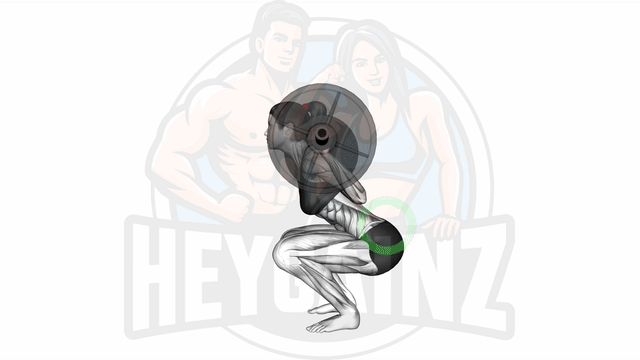
Instructions:
- 1Stand with a barbell balanced on your traps and shoulders
- 2Lower your body by bending at the hips and knees until your thighs are parallel with the ground
- 3Pause for a moment at the bottom
- 4Push your body up to return to the starting position
- 5Repeat this movement for your desired amount of reps
Tips:
- Keep your back straight and chest up during the exercise
- Your feet should be shoulder-width apart
- Do not let your knees go past your toes when lowering
- Drive the movement from your heels
Understanding the Barbell Squat and Its Benefits
The barbell squat is a foundational exercise in strength training, known for its versatility and effectiveness. When focusing on the hips, this movement not only builds strength but also enhances mobility and stability in the lower body. While it's commonly associated with building overall leg strength, the barbell squat specifically targets the glutes, quadriceps, and hamstrings, making it a crucial component of any comprehensive workout routine.
Why Focus on Hips?
When you perform the barbell squat with an emphasis on hip engagement, you can effectively activate and strengthen the glute muscles. This can help improve posture and body mechanics, ultimately reducing the risk of hip pain. Many individuals may wonder, are barbell squats necessary? The answer is yes, as they contribute significantly to overall fitness and functional strength.
What Are Barbell Squats Good For?
Barbell squats offer numerous benefits, including:
- Glute Activation: Do barbell squats work glutes? Absolutely! This exercise is one of the most effective ways to train the glutes and build strength in that area.
- Joint Health: Proper squat technique promotes healthy hip and knee joints.
- Core Stability: Engaging your core during squats can enhance overall stability, which is vital for various physical activities.
- Caloric Burn: Compound movements like the squat can help burn calories and aid in weight management.
Tips for Safe and Effective Barbell Squats
To maximize the benefits of barbell squats while minimizing the risk of injury, consider the following tips:
- Form First: Prioritize proper form over weight. Keep your feet shoulder-width apart and ensure your knees track over your toes.
- Warm-Up: Engage in a dynamic warm-up to prepare your muscles and joints.
- Mind Your Core: Keep your core engaged throughout the squat to maintain stability.
- Listen to Your Body: If you experience hip pain during squats, evaluate your form and consider adjusting your range of motion.
Incorporate barbell squats into your routine to reap the numerous benefits they offer for hip health and overall strength. With practice and attention to form, you can effectively enhance your lower body fitness and become more adept at various physical activities.